
|
Olympus E-30 Image Samples — Part 1 |

|
My other articles related to the |
|
This is the first batch of image samples from the Olympus E-30. Their purpose is to illustrate how this camera handles common subjects and situations: color, resolution, tonality, and related characteristics. They are not intended to be a showcase of my (limited) skills as a photographer. These samples are first of all for my own use, to give me some ides about camera's way of doing things and about its imaging capabilities and limitations. Scrutinizing them allows me to tweak the camera settings to my needs and liking, and to use it better. Posting them for here is a secondary purpose. With a few exceptions (clearly marked), I'm showing every sample as two pictures: a reduced (and re-sharpened) full frame, and a selected fragment of that frame, shown in 1:1 pixel scale without any postprocessing (just cropped and re-saved); sometimes a few such fragments. Sometimes I'm also providing a link to the original full frame. All these pictures were saved by the camera as JPEGs; otherwise I still would have to use an external program for raw-to-RGB conversion; another variable in the equation. Keep in mind that the 1:1 samples, show detail which will not be seen in a reasonably-sized print (or any print at the right viewing distance), with all image flaws standing out more than in the normal viewing. On a typical, 96-dpi monitor, the 1:1 samples from a 12 MP camera correspond to prints 31.5×42" (80×107 cm) in size, and should be viewed from a distance equal to the diagonal of that rectangle: 52.5" (133 cm). Viewing them any closer is pixel-peeping, and you can go blind if you do it. The samples are presented in a few groups:
This time I decided to start from a few pictures without any image processing adjustments: Natural Picture Mode (no tweaking), normal gradation, sharpness and noise filtering at Normal. Matrix metering was used for all shots in this section. JPEG compression was 1:2.7. |
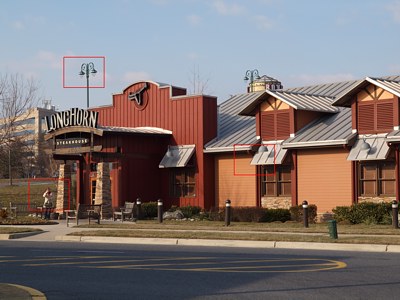
|
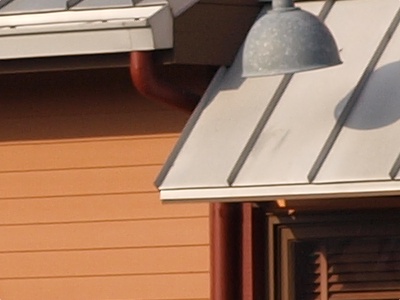
| |
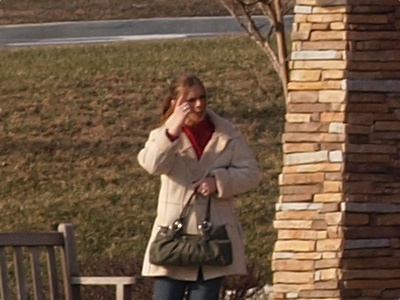
|
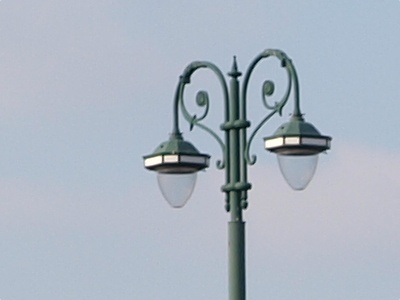
| |
|
[1] 12-60 mm F/2.8-3.5 ZD at 40 mm, program exposure (0 EV): 1/250 s at F/6.3, ISO 100; Auto WB [full frame] | ||
|
To get an idea on how the camera handles the exposure depending on the scene, I used five-frame bracketing with a 1/3 EV step, then for each sample I selected the frame I liked most. The selected exposure compensation is shown in every image's caption. The first sample is, actually, the very first picture I shot with this camera. Here I chose to show three 1:1 samples, in addition to the full frame. | ||
|
Because the scene does not contain bright areas way above the average, in this shot the original (non-compensated exposure) was right on the nose, or almost so. Have a look at the luminance histogram: |
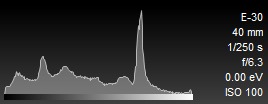
| |
|
Checking the other frames in the sequence shows that -0.3 EV (a value I most often use for such subjects) would also work fine; perhaps a matter of taste, but that would help with some small areas in the roof, overblown here. The next section offers such comparison.
Anyway, this is consistent with other Olympus cameras I've been using: I will not have to change my working habits for the E-30.
Obviously, the 12-60 mm ZD captures lots of detail; the full-scale fragments talk for themselves. | ||
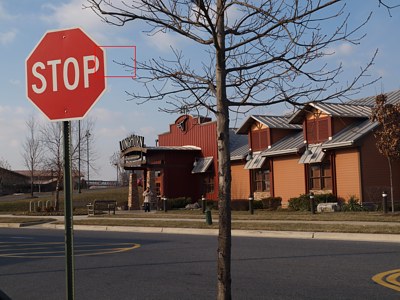
|
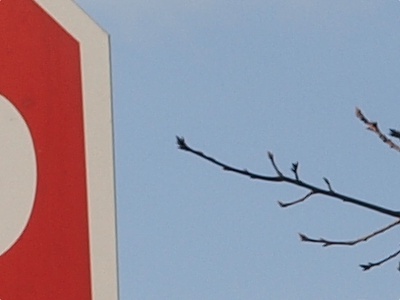
| |
|
[2] 12-60 mm F/2.8-3.5 ZD at 26 mm, program exposure (-0.3 EV): 1/320 s at F/7.1, ISO 100; Auto WB | ||
|
Above, a different angle and -0.3 EV of exposure adjustment. Again, you may prefer 0 EV here, but I like having my images a bit down, with better highlight protection and deeper tonality, even at the expense of shadow detail (a common National Geographic trick). Note that the almost-white parts of the sign are still OK. The sharpening (set here at default) seems a bit excessive: you can see some "bounce" artifacts on the branch against the sky, and that's visible even from my recommended viewing distance of four feet. |

|

| |
|
[3] 12-60 mm F/2.8-3.5 ZD at 17 mm, program exposure (-0.3 EV): 1/320 s at F/6.3, ISO 100; Auto WB | ||
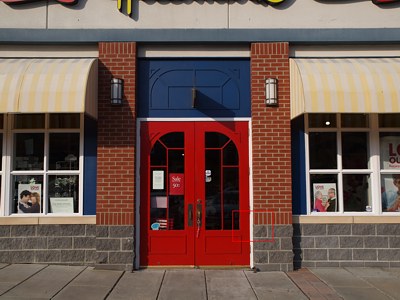
|
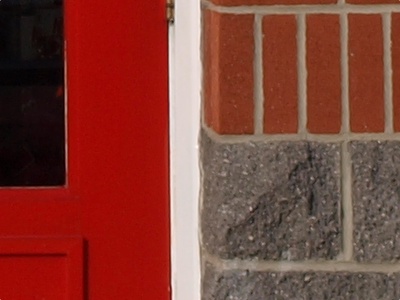
| |
|
[4] 12-60 mm F/2.8-3.5 ZD at 19 mm, program exposure (-0.7 EV): 1/400 s at F/7.1, ISO 100; Auto WB [full frame] | ||
|
The scene above calls for more exposure compensation: the camera is not in a position to "know" that the subject is darker than average, or that I want the tonality down. Perhaps -1.0 EV would be even better. Again, a predictable behavior. |
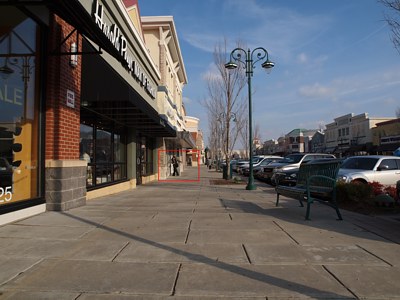
|
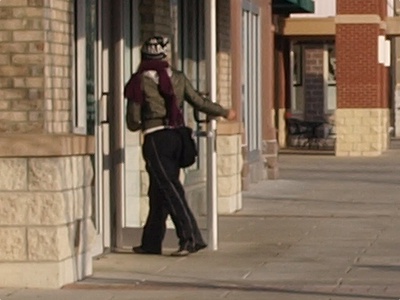
| |
|
[5] 12-60 mm F/2.8-3.5 ZD at 12 mm, AP (-0.3 EV): 1/125 s at F/11, ISO 100; Auto WB | ||
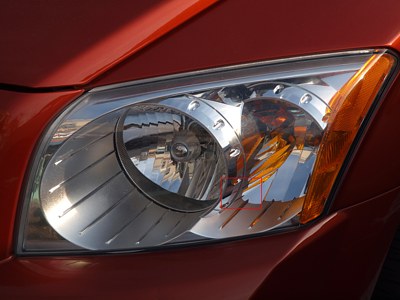
|
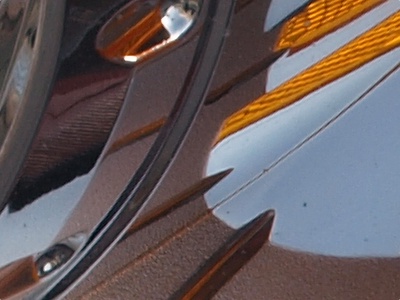
| |
|
[6] 12-60 mm F/2.8-3.5 ZD at 55 mm, AP (-0.3 EV): 1/200 s at F/8, ISO 100; Auto WB [full frame] | ||
|
OK, so we have an approximate idea what eye candy is the E-30 capable of on a sunny day at the lowest gain of ISO 100. While I will be dealing with high ISOs in another sample series, here is what happens if the gain is bumped up a notch or two. |

|

| |
|
[7] 12-60 mm F/2.8-3.5 ZD at 60 mm, shutter priority (-0.3 EV): 1/2000 s at F/6.3, ISO 400; Auto WB | ||
|
Sky is usually a good place to look for sensor noise, and, of course, at ISO 400 we can see some when pixel-peeping. While it is not objectionable, after reading some test reports I was expecting less. Still, nothing will stop me from using ISO 400 as the base setting for shooting with long lenses (like the 70-300 mm ZD); for shorter ones I will stick to ISO 200, just in case. We can also clearly see sharpening artifacts (I will be tuning sharpening down, definitely!), and a hot pixel on the white stripe. (I will do the pixel mapping only after I see how many dead or hot pixels the camera had to start with; so far it is the only one I found.) |
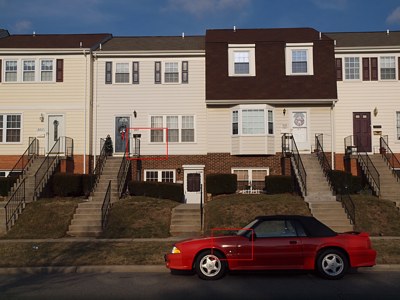
|
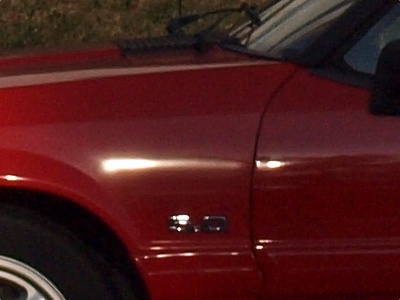
| |
|
[8] 12-60 mm F/2.8-3.5 ZD at 23 mm, shutter priority (-0.3 EV): 1/2000 s at F/8, ISO 400; Auto WB [full frame] | ||
|
Another ISO 400 sample: the noise under control (even if starting to creep in, see the red car); the tonal range of a quite demanding scene handled just fine; the high ISO setting does not seem to compromise the detail to any objectionable degree. A very nice performance.
|
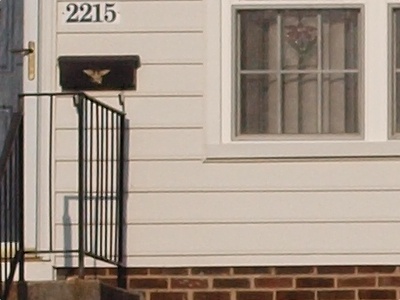
| |
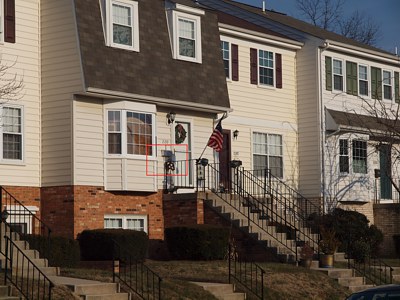
|
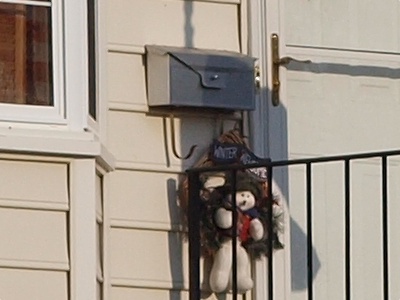
| |
|
[9] 12-60 mm F/2.8-3.5 ZD at 51 mm, AP (-0.3 EV): 1/2500 s at F/5.6, ISO 200; Auto WB [full frame] | ||
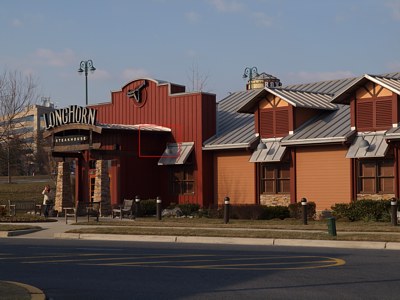
|
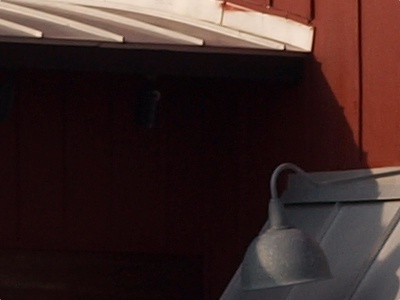
| |
|
[1a] Like [1], but with -2/3 EV compensation | ||
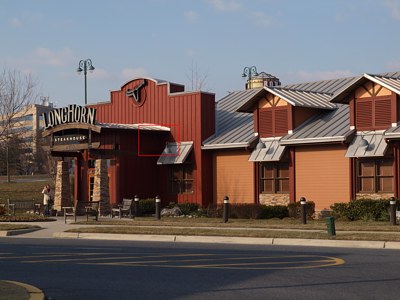
|
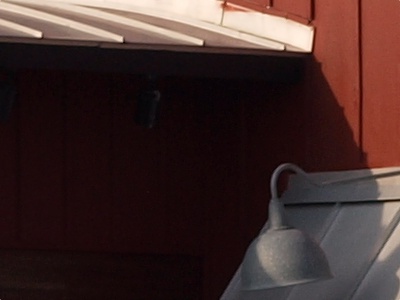
| |
|
[1b] Like [1], but with -1/3 EV compensation | ||

|
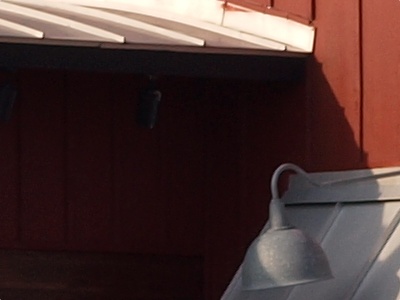
| |
|
[1c] Exactly like [1], i.e., no exposure compensation from the matrix-metered AE setting | ||
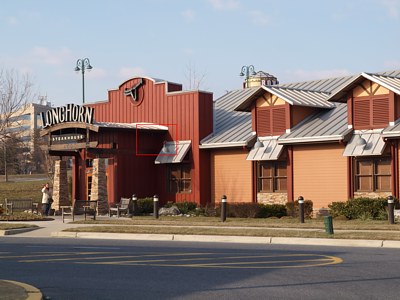
|
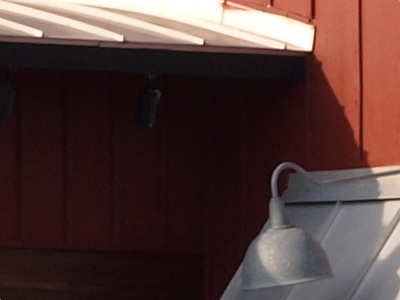
| |
|
[1d] Like [1], but with +1/3 EV compensation | ||
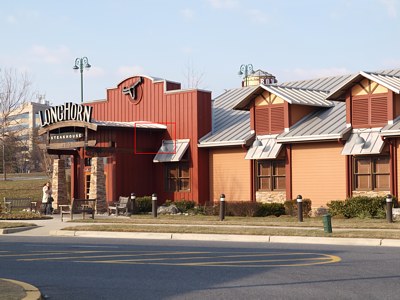
|
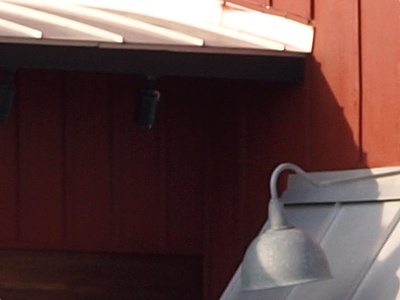
| |
|
[1e] Like [1], but with +2/3 EV compensation | ||
Luminance distributions for all five versions of this frame are shown below. If you look really close, you may see that all suffer from some, if not much, clipping in both shadows and highlights. One day somebody will be smart enough and start showing these histograms in logarithmic (vertical) scale. This will make it easier to spot low-count bins, especially significant at the top end. |
|
For this scene, the real choice would be anywhere between -2/3 EV and 0 EV (above that the highlights are overblow), with -1/3 EV, my regular adjustment under such circumstances, most to my liking. Your mileage may vary.
| 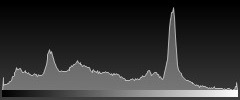 0 EV
|
| 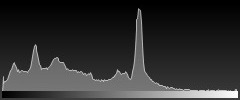 -2/3 EV
| 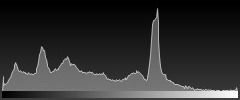 -1/3 EV
| 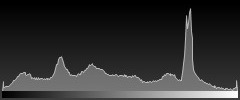 +1/3 EV
| 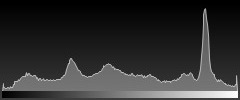 +2/3 EV | |||
|
There is no chance this scene would fit into the dynamic range of any sensor of today; the photographer must make a compromise here, deciding how that tonality will be handled. People who think that spending a few hundred dollars for the last, "improved" camera frees them from having to make such decision are just confused. This is a scene I shoot often, from a tripod located about 30 feet from my patio door. I also know where to look to evaluate these images. In this series, the camera was set to matrix (ESP+AF) metering, i.e., with emphasis on the focus area, although I am not sure if this works when AF is done in MF mode (this is not a typo, see below). Contrast and sharpness were both at -1 in Natural Picture Mode, gradation at Normal, noise filtering at Low. On-demand autofocus (in MF mode) was used to assure that the lens was focused at the yellow fence. JPEG compression was set to 1:4, which is what I normally use. First, let's go through some samples for various focal lengths, starting from the long end of the 12-60 mm ZD lens. |
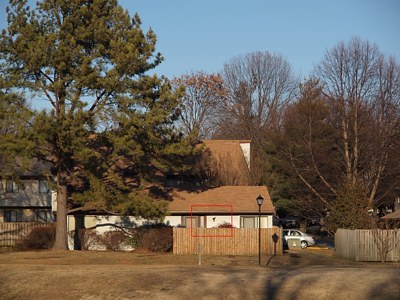
|
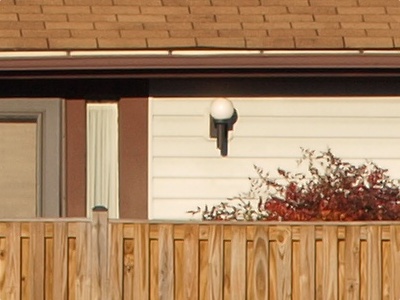
| |
|
[10] 12-60 mm F/2.8-3.5 ZD at 60 mm, AP (-0.7 EV): 1/1250 s at F/4, ISO 100 [full frame] | ||
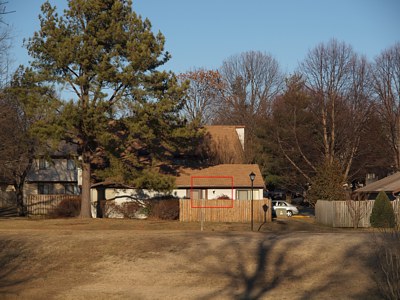
|
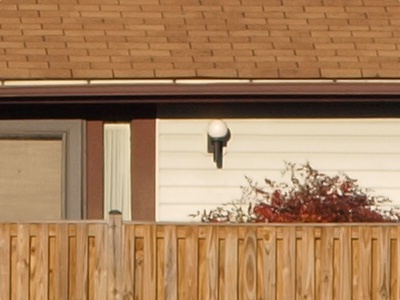
| |
|
[11] 12-60 mm F/2.8-3.5 ZD at 49 mm, AP (-0.7 EV): 1/1250 s at F/4, ISO 100 | ||
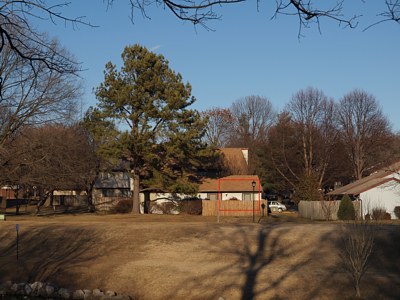
|
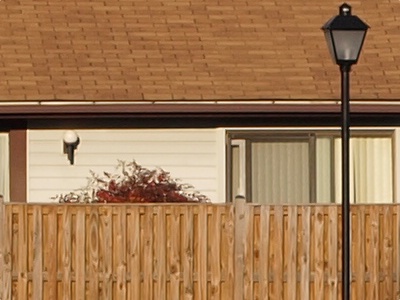
| |
|
[12] 12-60 mm F/2.8-3.5 ZD at 35 mm, AP (-0.7 EV): 1/1250 s at F/4, ISO 100 | ||
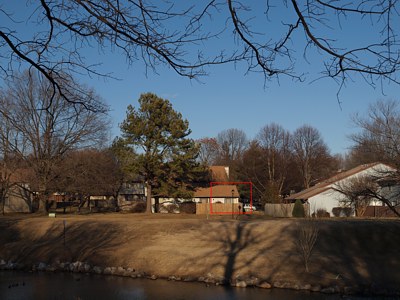
|
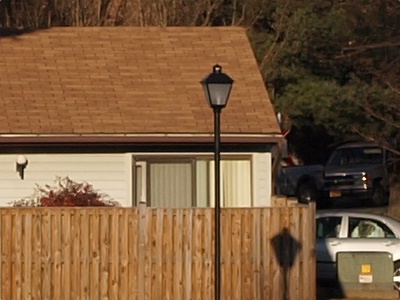
| |
|
[13] 12-60 mm F/2.8-3.5 ZD at 24 mm, AP (-0.7 EV): 1/1600 s at F/4, ISO 100 | ||
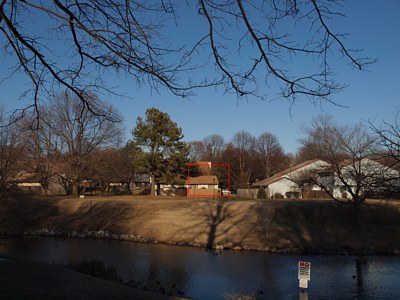
|
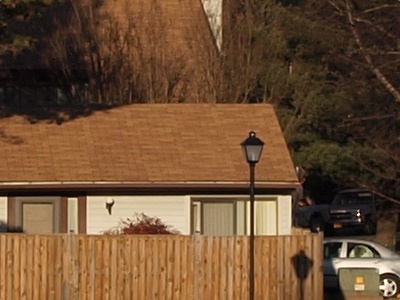
| |
|
[14] 12-60 mm F/2.8-3.5 ZD at 19 mm, AP (-0.7 EV): 1/1600 s at F/4, ISO 100 | ||
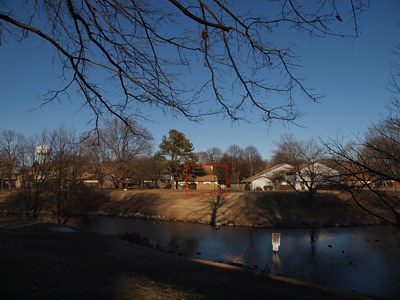
|
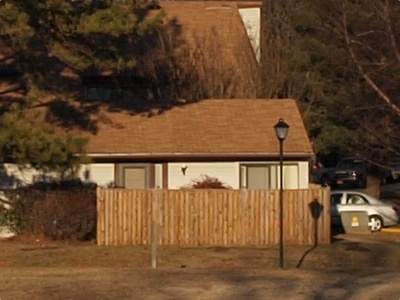
| |
|
[15] 12-60 mm F/2.8-3.5 ZD at 12 mm, AP (-0.7 EV): 1/1600 s at F/4, ISO 100 [full frame] | ||
|
First of all, notice that in spite of zooming out by a factor of 5× between the first and the last frame, the AE system changed the exposure by only 1/3 EV: from 1/1250 to 1/1600 s at the fixed aperture of F/4. This in spite of greatly varying scene composition, with lots of shadow areas at wider angles. This indicates that the ESP matrix metering is quite smart.
The lens, as we already know from the E-3 samples, provides good center resolution at this aperture, even at the widest angle. At this aperture no corner vignetting can be seen. Still, I've checked this scene at the wide angle with other apertures; of these let me show you only F/2.8: |
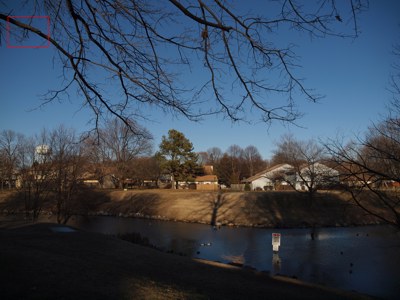
|
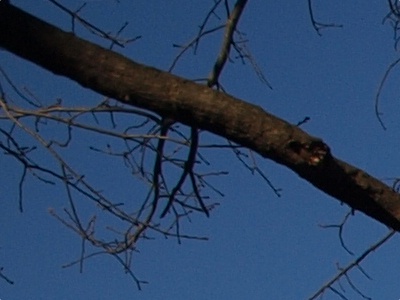
| |
|
[16] 12-60 mm F/2.8-3.5 ZD at 12 mm, AP (-0.7 EV): 1/3200 s at F/2.8, ISO 100 | ||
|
Like before, these samples say more about the lens than about the camera itself, except that they clearly demonstrate that the camera can handle what lens throws at it, and vice versa If you are viewing this on LCD monitor (with brightness depending on the viewing angle), you may not notice that there is (just a) hint (just a hint) of vignetting visible in the corners. Actually, less than I would expect, even from the best lens fully open at this wide andle. The winter lake shots shown above are quite different than those I took with other cameras for the same subject, so color and tonality comparisons may be not too easy. Five months later I did this scene again; here are just a few examples. All pictures in this section used Sunny WB, Natural Picture Mode (no adjustments), Low NF. |
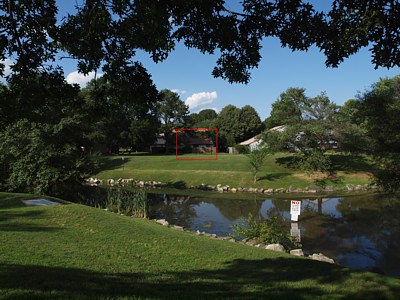
|
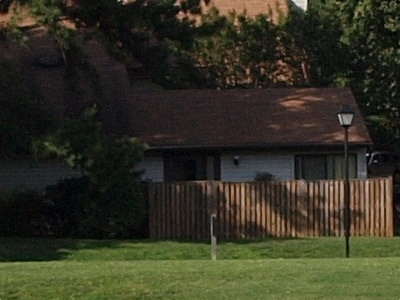
| |
|
[17] 12-60 mm F/2.8-3.5 ZD at 12 mm, AP (-0.7 EV): 1/1000 s at F/5.6, ISO 200 [full frame] | ||
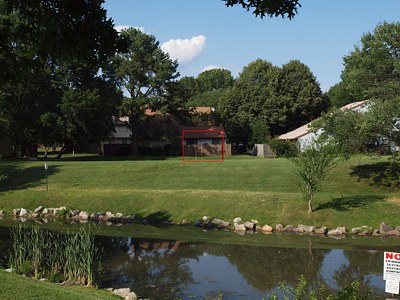
|
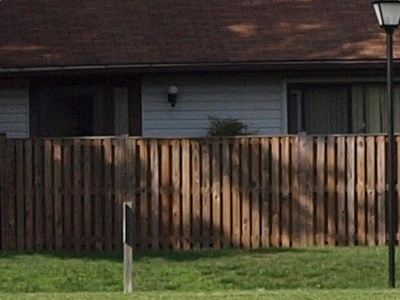
| |
|
[18] 12-60 mm F/2.8-3.5 ZD at 24 mm, AP (-0.7 EV): 1/800 s at F/5.6, ISO 200 [full frame] | ||
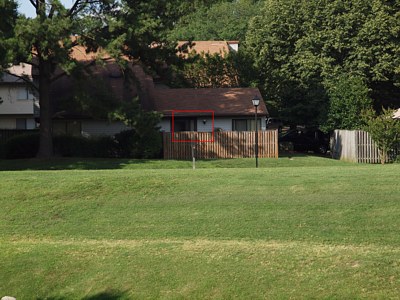
|
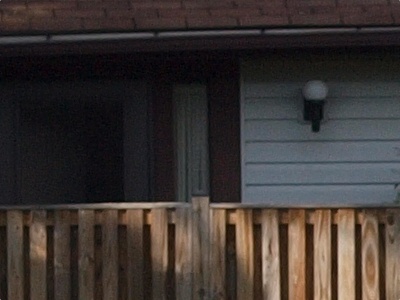
| |
|
[19] 12-60 mm F/2.8-3.5 ZD at 60 mm, AP (-0.7 EV): 1/640 s at F/5.6, ISO 200 [full frame] | ||
|
Not much can be added here, except that in the contrasty side light it es even more visible how sharp the lens is. Looking into the top left corner of [17] shows no trace of chromatic aberration; if you look close, however, you may see some sharpening artefacts (white bounces); that's why I prefer to tune the in-camera sharpening down a bit. Now a quick check how does the E-30 work with flash in the TTL Auto metering mode. For this I've used the FL-36 at ISO 400. The first sample (an innocent co-worker in my office) used direct flash; the two other ones — bounced. In case of the bookshelf, the bounce was off the side wall, to avoid deep shadows. The first two pictures were shot handheld at F/4; with the shallow depth of field the focus may be not accurate; just disregard that. The third one was taken from a tripod at F/5.6, so it should be focused just fine. |
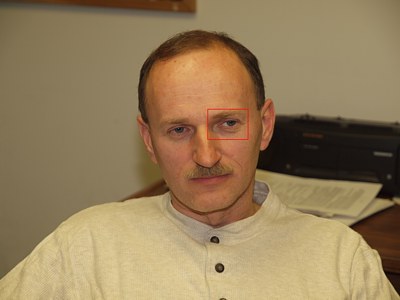
|
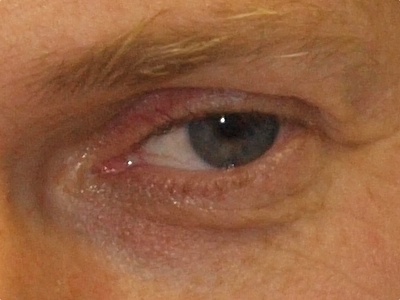
| |
|
[20] 12-60 mm F/2.8-4.0 ZD at 60 mm; AP (0 EV): 1/125 s at F/4, ISO 100; flash WB,
| ||
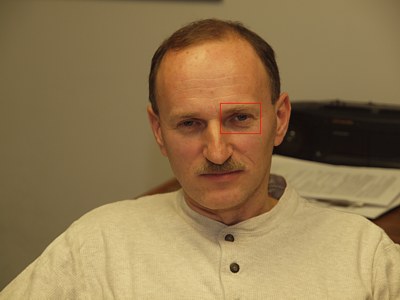
|
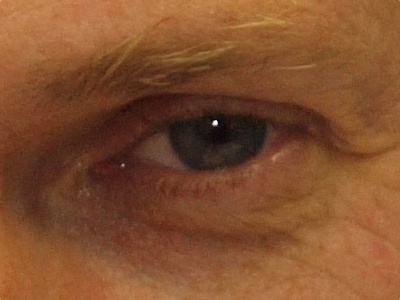
| |
|
[21] 12-60 mm F/2.8-4.0 ZD at 60 mm; AP (0 EV): 1/125 s at F/4, ISO 100; flash WB,
| ||

|
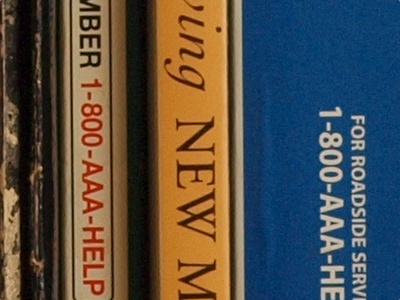
| |
|
[22] 12-60 mm F/2.8-4.0 ZD at 40 mm; AP (-0.3 EV): 1/80 s at F/5.6, ISO 100, auto WB, sharpness and contrast at Normal-1 | ||
|
Flash exposure is right on the nose; while I used -0.3 EV in the third shot to protect the white areas, 0 EV also turned out OK; a matter of taste. The 1/125 s in the office pictures was long enough to allow some greenish cast from the fluorescent light (WB was set by hand to 5500°K); Auto WB did a better job with the mixed light in the third image. At ISO 400, the noise is fine and even (see the blue book spine) A snow scene can be useful in checking how the camera behaves under difficult conditions, trying to handle a wide tonal range in the subject. Here is a quite revealing example, shot at ISO 100 and 400 (sharpness and contrast at Normal-1 in both pictures). |
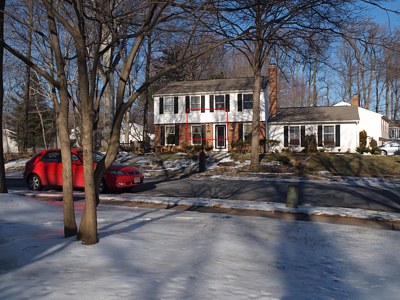
|
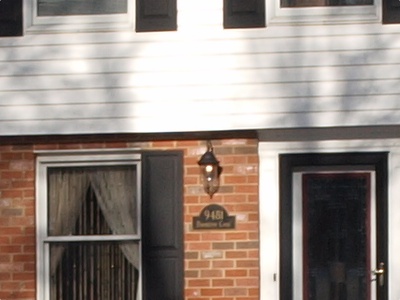
| |
|
[23] 12-60 mm F/2.8-4.0 ZD at 19 mm; AP (-0.3 EV): 1/320 s at F/8, ISO 100; sunny WB [full frame] You can also download the raw image file, as the picture was saved in both formats. | ||
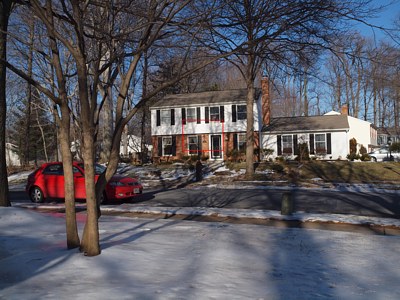
|
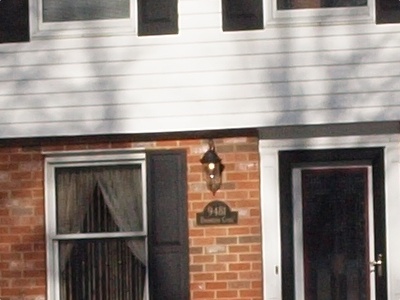
| |
|
[24] 12-60 mm F/2.8-4.0 ZD at 17 mm; AP (-0.3 EV): 1/1250 s at F/8, ISO 400; sunny WB [full frame] | ||
|
Surprisingly, ISO 400 shows some highlight detail, lost at ISO 100 (look at the white siding above the lantern), even if the exposure was identical (accounting for ISO difference). Maybe lower contrast helped. Obviously, an exposure compensation of -0.7 EV would work better. "Why won't you shoot raw and apply exposure compensation in postprocessing?" , some may ask. The answer is simple: it just will not work! This is a persistent urban legend in digital photography, that even considerable exposure errors can be fixed when developing a raw image.
After having posted this remark in the original release of this article, I've got quite a response from the Readers, 70% disagreeing with my skepticism. This deserves more discussion; see a separate article on Here is another snow scene, shot a few days later. With the darker foreground I started a bracketing sequence from -0.3 EV, which turned out to be the best choice. |
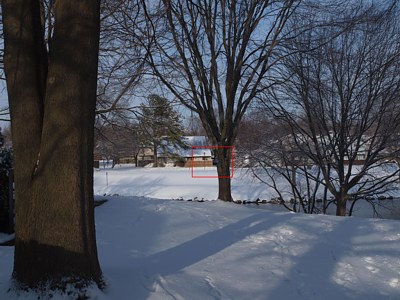
|
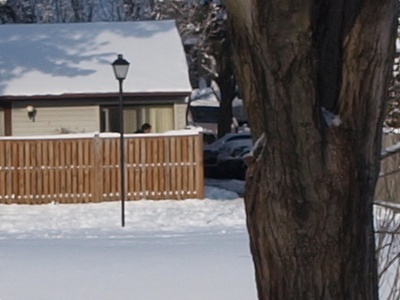
| |
|
[25] 12-60 mm F/2.8-4.0 ZD at 19 mm; program exposure (-0.3 EV): 1/400 s at F/7.1, ISO 100; sunny WB; sharpness and contrast at N-1. | ||
|
Note that the imaging pipeline is capable of handling detail in both shadows and highlights; while this is not a scientific observation, my impression (not just from this sample) is that the E-30 provides a slightly wider dynamic range than the E-510. More E-30 image samples My other pages with E-30 sample images:
|

|
My other articles related to the |
|
Olympus® is a registered trademark of Olympus Corporation.
This page is not sponsored or endorsed by Olympus (or anyone else) and presents solely the views of the author. |
| Home: wrotniak.net | Search this site | Change font size |
| Posted 2009/04/21; last updated 2009/12/13; touched up 2013/11/04 | Copyright © 2009 by J. Andrzej Wrotniak |